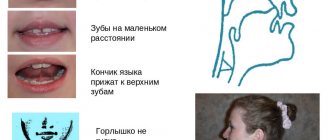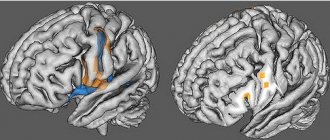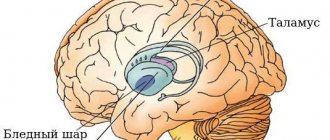Definition
Phonemic awareness is the ability to distinguish, analyze and differentiate heard phonemes - this is phonemic awareness. The baby's sound analyzer is turned on immediately after birth.
He listens to voices and reacts to them. After 6-7 months, he imitates the conversations of adults, copying syllables and individual sounds. By 12 months - says the first word.
In this way, acoustic images of individual phonemes are formed. Children can mix and replace them, this is considered the norm until a certain age. By the age of 4, the child should have a good grasp of the technique of pronunciation of most sounds of his native language. The only exception is -. If this does not happen, then we can talk about dyslalia - phonemic hearing impairment. It is important that incorrect pronunciation does not become a habit; the child must learn to control the clarity of speech, listen carefully to others and to himself.
Why develop phonemic awareness?
Poorly developed speech hearing can lead to problems with sound pronunciation. If a child does not distinguish phonemes, then he will not be able to pronounce them correctly. Confusion arises between similar sounds.
This will slow down the development of coherent speech, lead to errors in reading and writing, and difficulties in learning foreign languages.
It happens that a child speaks clearly, but cannot separate syllables into sounds. For example, when asked to name the first sound in the word “hand,” he says “ru.” This also indicates underdevelopment of phonemic hearing, which needs to be corrected. Otherwise, problems with competent writing are inevitable.
Vocabulary also suffers; it will be difficult for the child to pronounce complex words, express thoughts coherently, maintain the desired intonation in a conversation, and control the volume of his voice.
To avoid these problems, you need to develop phonemic hearing. And the sooner you start doing this, the better.
How it manifests itself
Mixing sounds and substitutions provoke dyslalia. Its presence can be determined by the following signs:
- Violation of sound pronunciation. Substitution of sound, for example, voiced sounds are perceived and pronounced as voiceless, hard sounds as soft.
- Omitting consonants and vowel phonemes in words, rearranging them, adding extra sounds. For example, sLobodny, instead of svobodny, dereLa instead of tree, etc.
- Weak differentiation of similar phonemes, their replacement in oral and written speech. For example, mixing and replacing s, z, w - rat instead of roof, bough instead of beetle.
Impaired phonemic hearing in children leads to errors in grammar. The most common spelling errors are unstressed vowels, double consonants, and unvoiced words at the end of a word. The student simply does not hear the impact sound. For him it is similar to an unstressed word, so it is difficult for him to select a test word. At school, such children fail not because of mental retardation or poorly developed intelligence, but because of impaired phonemic hearing.
Phonemic hearing and phonemic awareness
Phonemic perception is the ability to determine the sound composition of a word, that is, to analyze it.
For example, how many sounds, syllables are in a word, what sound is at the beginning, at the end, in the middle. Phonemic awareness is formed during schooling and is the foundation for subsequent learning to write correctly.
The difference between phonemic hearing and perception is that phonemic hearing is part of physical hearing, given to a person from birth, it does not need to be specially trained, but needs to be developed.
Good phonemic hearing allows you to perceive someone else’s speech, correctly construct your own, and clearly pronounce sounds. Phonemic awareness will not develop on its own; it is specially taught. It is obvious that, having problems with phonemic hearing, a child will not be able to develop phonemic awareness.
Causes
The central and peripheral nervous systems are responsible for speech hearing. The negative impact on them is the impetus for acoustic dysfunctions. The main causes of the disease can be:
- Weakening of the body at any age, especially early
- Infectious diseases
- Digestive problems
Lack of vitamins and minerals leads to lethargy, isolation, and apathy. Attention, level of concentration, memory weakens.
- Thyroid diseases
Hypothyroidism is especially dangerous at an early age, in newborns. Lack of hormones or their abundance have a strong impact on brain processes and mental development.
- Hyperactivity
It is difficult for the child to concentrate; he does not listen to the conversations of adults or their speech. Captures phonemes fragmentarily and also reproduces them.
- Hearing loss
- Injuries to the head, speech and hearing organs
- Unfavorable social environment
- Negative example
The parents have obvious, advanced speech defects that were not corrected in childhood.
Regardless of the causes of phonemic hearing impairment, you should contact a speech therapist, laryngologist, or neurologist as early as possible. Only a special examination and identification of the causes of the disease will help make a diagnosis and correct defects in a timely manner.
Symptoms
Not every speech defect in children can be considered dyslalia. We can talk about phonemic hearing impairment if the following symptoms are present:
- the pronunciation of individual sounds is impaired - sonority is replaced by deafness, hardness by softness, sounds are replaced by similar ones;
- the child misses the consonants in the word, rearranges the consonants: cockerel - kepushok, tepushok, tree - derela);
- the child has difficulty distinguishing or does not distinguish phonemes that sound similar (rat - roof, soot - Sasha);
- the child cannot identify the syllables in a word.
Children with impaired phonemic hearing write illiterately, get confused with accents, because they simply do not hear the correct stress, and do not differentiate the place of stress in a specific word. They have problems with consonants at the end of words.
Diagnostics
It is important to conduct phonemic hearing assessments in preschoolers before entering first grade. They are done by a speech therapist, a speech therapist and parents. Diagnostic techniques were developed by G.A. Kashe, T.B. Filicheva, G.V. Chirkina . Surveys are successfully used in schools, kindergartens, and at the PMC commission.
A specialist working with children uses the following methods to diagnose acoustics and speech defects:
- Determining the sound source (non-speech)
The subject is asked to listen to a musical instrument with his eyes closed, and then say what sound it made. Tambourines, rattles, drums, and bells are used.
- Distinguishing phonemically similar words
Exercise “Attentive ears”.
In front of the subject are pictures depicting objects familiar to him. These are fruits, animals, toys, etc. An adult pronounces a group of words that are phonetically similar to each other, one of them names a drawn object. The subject must pick up the picture when he hears the correct name of the picture.
For example, in the picture there is a pear. An adult slowly pronounces: gruf, glyusya, pear, glusa, etc.
Any raising of a picture without an exact name is considered an error.
Another option for conducting diagnostics using words that sound the same is “Show it yourself.” The preschooler receives pictures depicting objects. For example, hummock - bud - daughter; goat-scythe-vine; puddles-skis, etc. at the request of the teacher, points to the object that was named to him.
- Syllable differentiation
The ability to distinguish between soft and hard and voiceless and voiced consonants is tested by repeating what is heard.
The teacher says: Cha-cha-cha, mu-mya-ma. The child must repeat a group of syllables.
- Phoneme differentiation
“Clap your hands”
The preschooler listens to a set of sounds, clapping his hands if he notices the phoneme indicated by the speech therapist.
For example, find M in the sound row.
- Sound analysis
Surveys are based on identifying individual phonemes in a word. For example, a stressed vowel, the first sound or the last, the number of phonemes before and after the desired sound.
For analysis, words with 3 sounds are offered, if the child is over 5 years old - from 4-5.
- Phoneme representation and word selection
A more complex study based on phonemic analysis of representations. The subject must name words with the required letter, for example, D. Or select an image in the picture whose name has 4-5 letters.
Based on the results of diagnosing phonemic hearing impairment, the teacher:
- draws up an individual defect correction program;
- refers for further medical examination if necessary to identify the causes of the disease.
Using these analysis methods, it is possible to trace the dynamics of the development of acoustic abilities and the effectiveness of corrective measures.
Correction
Phonemic hearing impairment in children is treated comprehensively. What to drink or how to exercise, you need to find out from specialists: a neurologist, psychiatrist, speech therapist, speech pathologist. Medical care is provided along with active classes with teachers.
Drug treatment
You cannot teach speech with the help of medications, but their use helps improve the functional state of the brain and blood flow. An increase in brain performance is directly related to an increase in memory capacity and the ability to concentrate. Kids have to work hard, try to remember new things, and monitor their own and other people’s speech. Pills and injections help him in this difficult process.
Most often, a neurologist and speech therapist prescribe:
- Pantogam
Stimulates the central nervous system, reduces excitability, increases mental performance.
- Glycine
Relieves emotional stress, aggression, improves sleep.
- Phenibut
Normalizes metabolism in tissues and blood circulation in the brain. Relieves feelings of fear, anxiety, increases performance.
- Cortexin
Restores brain function after injury and stress. Improves memory, attention, increases the level of learning.
Simultaneously with taking medications, massage and exercise therapy are prescribed. Parents should also monitor the baby’s nutrition. Add more meat dishes and fruits to your diet. Pay attention to the hemoglobin level.
First stage
The initial stage of work allows you to create a base, a foundation for the development of fine hearing and is suitable for very young children. What do we have to do? Play! For example, the game “Guess what it sounds like.” Everyday situations can be played out: the sound of pouring water, the clinking of dishes, a person’s steps, a cat’s meowing, the rustling of paper.
Other exercises for this stage:
• “Magic sounds”. Together with your child, fill woven bags, opaque plastic containers, or just matchboxes with any “sounding” materials: cereal, metal clips, buttons. You need to guess by the sound what's inside.
• Regular “Zhmurki” is perfect for solving phonemic problems. The child needs to move towards an agreed sound, for example, clapping hands or ringing a bell.
• "Magic Pencil". Give your child a regular pencil and ask him to tap objects of different textures made of wood, glass, metal, and paper.
• “Clap!” The child needs to repeat after the adult the rhythm of clapping and alternating pauses of different lengths. First, the exercise is done with open eyes, then you can make it more difficult: blindfold your eyes with a scarf or simply close them.
To understand how to practice, watch informational videos about the development of phonemic hearing. The video will help you not only understand the logic of the lesson, but also master the most effective working techniques.









